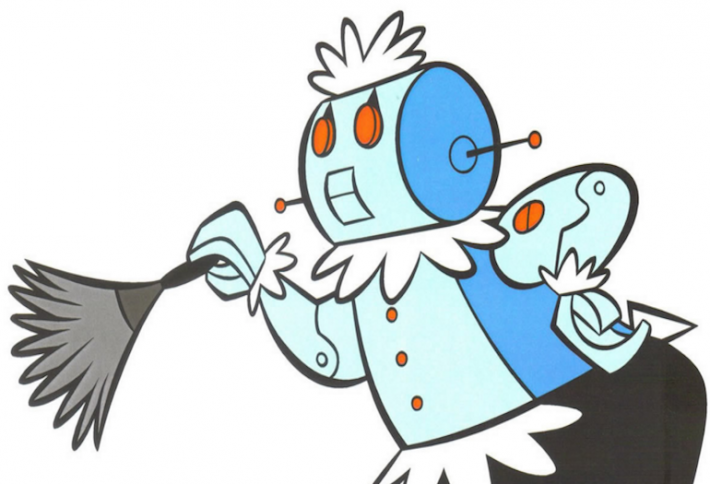
Robots are good at lots of jobs, but not at all jobs. Assembling paper cups? Totally a job for a robot. Folding laundry? Absolutely not.
In fact, housework is an area in which robots would be very welcome, but in which they just don’t shine. Folding laundry is super difficult because laundry is so variable in shape, size, color, and orientation that it’s almost impossible for robots to identify a piece of laundry and pick it up. Then robots would need to recognize the shape of the laundry when it’s not folded, figure out what shape it should be when it gets folded, and determine how to get from A to B.
Picking things up and putting them away is also touch for robots. A toy boat, a computer, a guitar, a pair of scissors, and a book may all be left in places where they should not be. Each of those objects must be identified and picked up even though they are completely different. Then he robot would have to figure out where each object goes. Even picking up a bunch of toys and putting them all into a toy box is challenging. Multiple objects is mind-boggling for a robot, especially since it doesn’t actually have a mind.
Solution? Human operators
A Japanese company thinks it has solved the problem. Remote human operators see the pile of laundry and make the robot pick up pieces and fold them. Ditto for objects out of place. It’s the equivalent of robotic surgery, in which surgeons guide the robot’s arms and instruments. The robot makes no decisions.
Robotic surgery has some real advantage. The instruments used are very small and precise, and the process is less tiring for the surgeon than operating directly on the patient. It is therefore safer and more exact to operate with da Vinci than without the robot tools.
That’s not the case for housework robots. They can do laundry and pick up toys, and perhaps even care for elderly people or dust, but they can only do these things in slow and cumbersome responses to their human operators’ commands.
Actually hiring a human being to do these tasks would make much more sense.
The Japanese company expects to charge $225 per month, for 6 to 8 hours of work. That’s, at best, $28 an hour. Human cleaners in the U.S. make an average of $16 an hour. American women spend an average of 2.25 hours per day — more than 65 hours per month — on housekeeping.
The math makes it clear that those robot housekeepers will be taking on just about 10% of the average customer’s housework, at a premium price.
Plan for the future?
Many “autonomous” robots currently work only because they have human minders. Typically, these are robots delivering items or cleaning floors. They are monitored by human beings who come to their rescue when they get stuck. One person can oversee a number of robots.
If the human being is actually operating the robot, overseeing each movement, then there will be a one-to-one ratio between the robots and the operators. This is reasonable if you’re using VR for remote repairs or rescues, but impractical for most tasks.
It’s more like faking the robot activity.
We specialize in Rexroth industrial electric motion control systems. If you need support or service for legacy or current components, call us first for best results.
